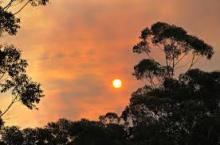In these two film clips, Dr. Joe Solanto discusses what trauma is and how the experiences of colonisation for First Nations peoples in Canada” qualify” as trauma. He describes how trauma is transmitted across generations. Crime and other social problems are understandable responses to trauma. [7’26”]
> Don Coyhis: What the Boarding Schools Did to Our Community


 It’s hard to believe that it is over seven years ago since I launched
It’s hard to believe that it is over seven years ago since I launched  ‘Our first generations were killed and imprisoned, and females sexually misused. Our second generations turned to alcohol or drugs as their cultural and spiritual identity was damaged; in our third generations we had spousal assault and societal trauma.
‘Our first generations were killed and imprisoned, and females sexually misused. Our second generations turned to alcohol or drugs as their cultural and spiritual identity was damaged; in our third generations we had spousal assault and societal trauma.








